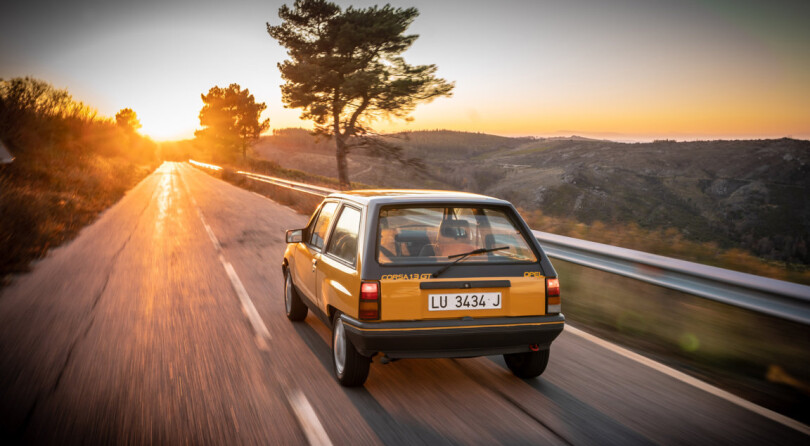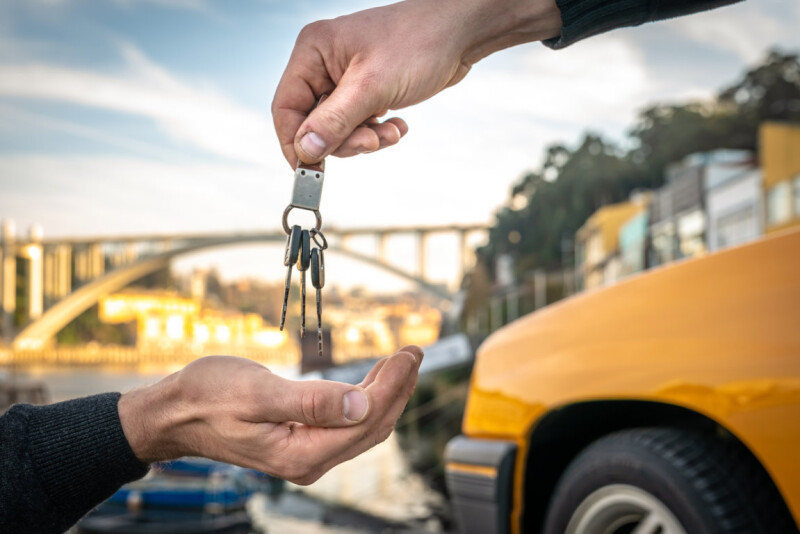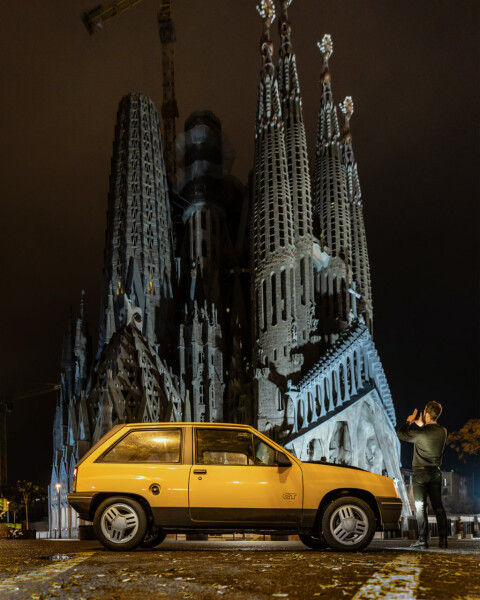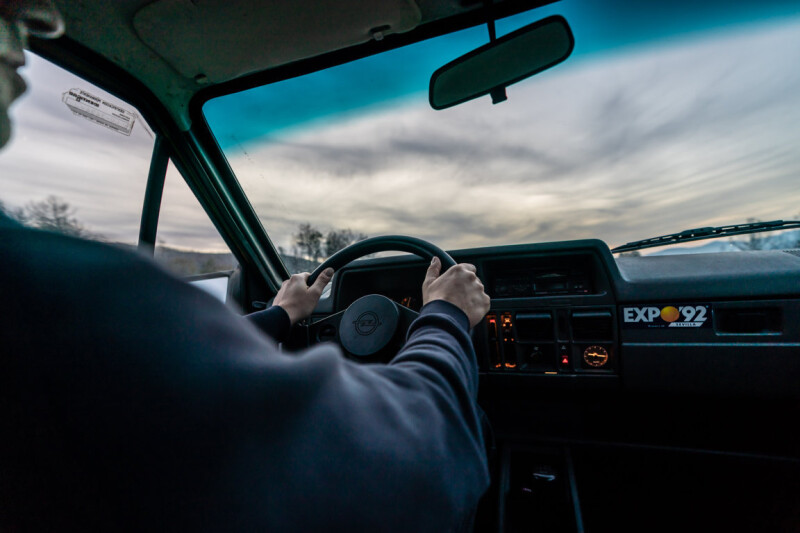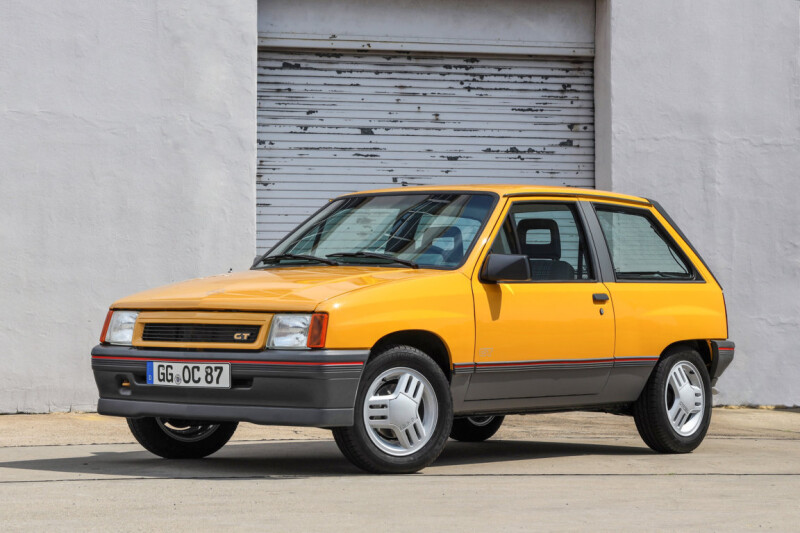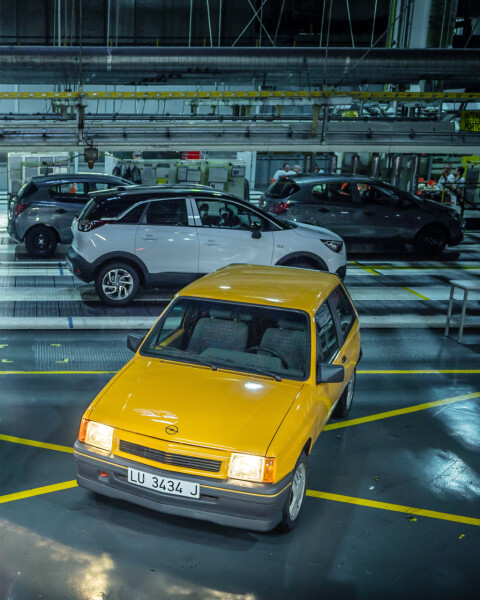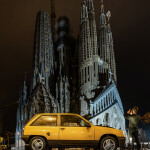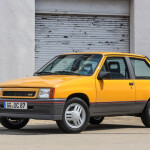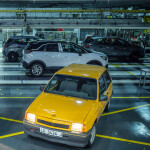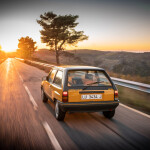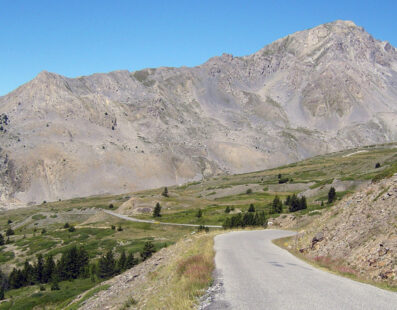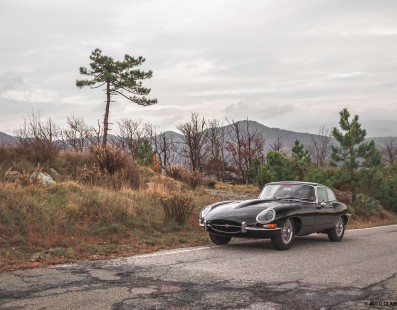From the Atlantic to the Main: The Opel Corsa A GT on its 2,700 km journey from Porto to Rüsselsheim.
Words and Photos by Opel Classic
A yellow Porto sun is as bright as Opel’s latest acquisition – a rare GT-spec Corsa A. The small, little-known Gran Turismo is parked right by the Portuguese coastal city’s eponymous port. It had formed part of Opel’s range between April 1985 and the fall of 1987. Intended to replace the Corsa SR, it was originally fitted with a 1.3-liter four-cylinder engine whose carburetor could whip up some 70 horsepower on a good day.
With those eager horses under the hood and its discreet spoiler, it was the sporty spearhead of the first Corsa generation – followed by the extra-strong GSi in 1988. It also came with a jewel of a five-speed gearbox to keep its thirst and its revs in check when the pace picked up. Which is just as well, because our GT is about to embark on its very own grand tour from Porto to Rüsselsheim.
It took Opel several months before it finally found an unadulterated example of this automotive treasure. Originally registered in Spain, it had long languished in the obscurity of a Portuguese garage. After a check-up at the garage, the deal was done. As you would expect, we were determined to get this gem of a car to Germany in fitting style, under its own steam. The boss of the little garage hands us the keys and paperwork with minimal fuss. He assures us the car is in good technical shape, but spurns our offer of a photo to mark our departure.
As he says himself, the Corsa is more photogenic anyway. Looking at the GT, it’s hard to believe it left the Opel plant in Zaragoza, Spain, back in 1987. There is no sign of rust and the seats are every bit as supportive as they were the day it was built. The odometer shows 38,000 kilometres; if the numbers are correct, our Corsa hasn’t even made it once round the Equator in its 32 years. We let the figures sink in briefly over a pingo – the typical Portuguese espresso, served with a splash of milk. Then it’s time to give the GT a quick feed. Filling its 42-litre tank takes only slightly longer than the 12.5 seconds it needs to go from zero to 100 km/h.
Almost as soon as we’ve left the last of Porto’s tile-adorned houses behind us and joined the auto-estrada heading north-east, the Corsa begins to show exactly why it carries the epithet “GT,” quietly gliding through the traffic with consummate ease.
The chassis eschews any suggestion of an overly hard ride, and there’s no trace of excess play in the steering either. Meanwhile, the combined instrument panel is giving us an impressive array of information. Aside from all the usual details, it also displays the oil pressure and rev-counter. Admittedly, we’re not quite so confident in the little fuel gauge. Has it really survived all those years unscathed? That needle’s moving very slowly…
But after a few hours it turns out that the GT’s fuel consumption is absolutely consistent with the manufacturer’s specifications – the little speed demon seldom needs more than six litres per 100 kilometres. Of course, this is partly down to a curb weight of around 750 kilograms, meaning the lightweight machine boasts a power–weight ratio of 10.71 kilograms per horsepower.
A 2,700 Kilometre Road Trip
The Corsa GT gets its first chance to play its trump card on the undulating roads of the Parque Natural de Montesinho. The Opel hustles its way quickly and precisely over crest after crest despite its lack of power steering. Like many a rally stage fought out in this part of the world, our elegant progress through the beautiful northern Portuguese countryside is eventually interrupted by “race control”.
Fortunately for us, after some brief bemusement as to why two Germans might be driving a Spanish Opel along the tranquil back roads of rural Portugal, the police officers give us a friendly wave and we set off on the next stage of our journey. It’s time for some lunch. There is only one restaurant open for business in the peaceful mountain village of Vinhais. The cook is delighted to see us, but she only speaks Portuguese.
As our own vocabulary is limited to only the most essential words – such as “power loss” and “flat tire” – she makes a quick call to her son, who proceeds to explain the menu to us over the phone in English. After some fine local cuisine and a swift glass of port for the navigator, the cook sends us on our way with an embrace and a hearty “boa viagem.”
The drive is a real pleasure, and a few hundred kilometres and a short night later the refreshing waves of the Atlantic Ocean are lapping at our feet. We celebrate our arrival with a tortilla de patatas, four cortados and 40 litres of 95-octane fuel. And the oil consumption? Zero! The GT rolls on to Bilbao, the largest city in the Basque autonomous region, in relaxed fashion.
Spain, Here We Come!
We pay a visit to the Guggenheim Museum while our yellow companion takes a nap. Eventually, we wake it from its slumber for a jaunt through the lively city. We are struck once again by how easy the Corsa is to drive – and how effortlessly it slips into the smallest of parking spaces.
The day’s evening leg takes us along the Ebro, Spain’s second-longest river. The Opel crosses the world-famous Rioja winemaking region and arrives in Zaragoza just as darkness begins to descend over the city. We are welcomed by the sound of raindrops clattering against the windshield, blurring the lines of the city’s trademark Cathedral Basílica del Pilar.
Dancing Through The Alleyways
We pick our way carefully through the Old Town. The hotel owner had warned us in no uncertain terms that finding his esteemed establishment would be no easy task. Certainly, the drive through the narrow alleyways is not for the faint-hearted. So it’s a good thing the Corsa has the agility of a cat, especially given the hotel’s underground parking lot has about as much room for manoeuvre as an elevator shaft. The concierge points to long scratches along the wall as he explains how a VW Passat had just gotten itself horribly stuck.
The next morning, we have a celebration to attend. At the appointed time, the Corsa parks up in front of the gates of the nearby Groupe PSA plant. The plant is now one of the Group’s biggest sites since it first opened 36 years ago. Along with the new Corsa, the factory also produces Opel’s Mokka and Crossland models, as well as the Citroën C3 Aircross. The GT is in luck. As well as being granted access to the site, it’s also been given permission to take a look around the manufacturing halls – the same one where it was built in 1987.
As the yellow GT stops next to the assembly line, many of the older staff come to greet it like an old friend. Its arrival is a great excuse to swap stories about the early days of the plant. While they are talking, a fifth-generation Corsa rolls off the manufacturing line and joins us for a family photo, making the GT look like its older – albeit smaller – brother. In fact, that’s exactly what it is, since the new Corsa E is bigger even than the Kadett E of the 80s. The Spanish Opel staffer snaps a couple more photographs before we get on our way again, heading for Barcelona.
Another Stop in Catalonia
The GT hurries on to Barcelona at 140 km/h. It has a bit of sightseeing to do. Starting at towering Montjuïc, it rolls through the night streets to the brightly lit vision of Catalan Art Nouveau that is the Hospital de Sant Pau, and then on to the triumphal arch the locals call the Arc de Triomf, once the main entrance to the World’s Fair of 1888.
Time flies when you’re having fun, and even if our Spanish travelling companion does feel at home here, we still need to wake it up before sunrise. After a short stop at the famous Sagrada Família, the little car with the Blitzbadge gets back on the road again, fighting its way through the heavy early morning traffic on the hill leading up to Montjuïc cemetery.
The last full leg of the journey starts with an unscheduled pit stop. A police checkpoint has been set up just after the first toll booth of the day, and the boys in blue decide to stop the little GT. Their questions have a familiar ring to them: What are two Germans doing in an old, Spanish-registered Opel Corsa?
Our friends in uniform are less than convinced when we tell them our yellow speed demon set off from Portugal two days earlier and will be handed over in Rüsselsheim the next day. Only after they have had a good look in all our bags and checked the display on our digital camera do they accept our likely story. Finally we hear a “buen viaje,” reminiscent of the Portuguese colleagues, and get back underway to France and Switzerland.
The speed differential starts to grow just after we reach Basel. As we cross the border into Germany the traffic around our Corsa begins to gather pace, and keeping up becomes more of a challenge. Theoretically, it can do 166 km/h – but we are not so sure. Instead, we decide to cover the last 300 kilometres at our own pace in the right-hand lane, which is often deserted. It gives us a bit more time to breathe in the smell of the 80s, drum our fingers on the simple dashboard, and sink into the velour of the sports seats.
The last leg is also goes without problems. We arrive in Rüsselsheim and hand the Corsa GT over to the team from Opel Classic.
At the end of the trip, we are struck by two things: first, how modern today’s small cars have become, especially as far as comfort is concerned; and second, it really doesn’t take much to be happy behind the wheel.

